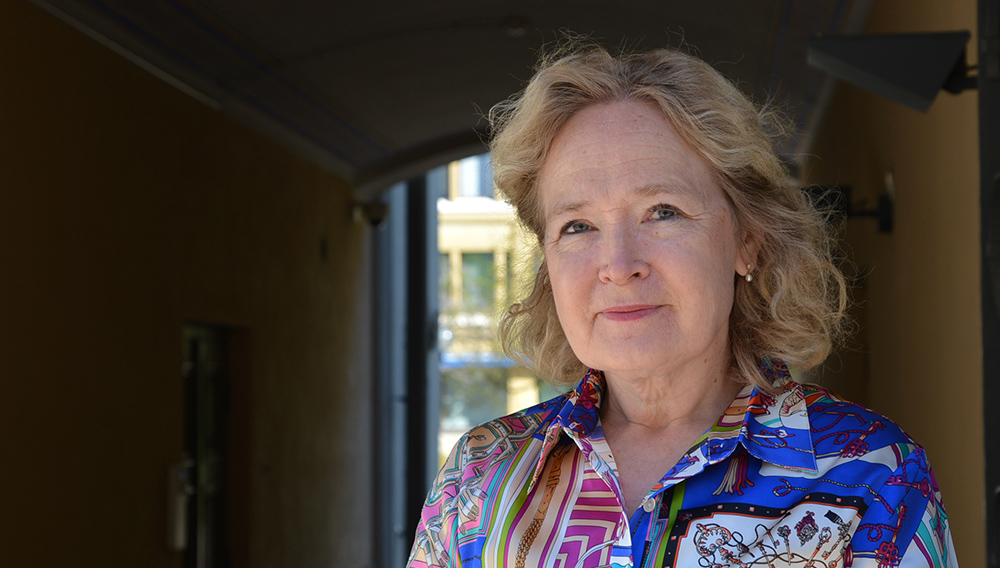Permanent Secretary Jaana Husu-Kallio's speech at the European Sustainable Phosphorus Conference in Helsinki

Ladies and Gentlemen, Colleagues and Friends, It is a great pleasure to have the opportunity to be here in this important and interesting conference, where we can share information on scientific research results and novel practices, and significantly advance nutrient circulation in all our countries.
In Finland, we have worked for quite some time to systematically improve nutrient circulation in our food system. The national work plan on nutrient recycling adopted in 2011 sets down a large number of measures to promote nutrient circulation. The monitoring of the work plan shows that good progress has been made in many areas of nutrient circulation. Since 2012 funding has been made available to a large number of projects through the funding mechanism for nutrient recycling established as part of the plan, which is managed by the Ministry of Environment.
The Rural Development Programme financed by the EU and from national funds constitutes our basic toolkit for sustainable agriculture. Nutrient recycling and good soil health are the two focus areas for meeting our international and national environmental commitments, which may concern cleaner waters, climate change mitigation or adaptation, or cleaner air. In Finland we pursue these goals through environmental measures which cover more than 90 per cent of our cultivated area, and are complemented with environmental investments, advisory services, and training and development projects. Through these actions, Finland has made significant progress in reducing the use of mineral fertilizers and the load on water bodies.
Among the objectives of Prime Minister Sipilä’s Government is that Finland is among the world leaders in the circular economy by 2025. The key project on the bioeconomy and clean solutions contributes to reaching this objective. The specific aim is to process 50 per cent of manure and sewage sludge with advanced technologies in coastal areas, which are vulnerable to eutrophication. The programme is implemented by the Ministry of the Environment, Ministry of Agriculture and Forestry and Ministry of Economic Affairs and Employment.
The Ministry of Agriculture and Forestry has an important new funding mechanism for developing new technologies for the production of organic fertilizers and new logistics systems. By now we have financed about 50 projects, including interesting experimental approaches for processing manure and other biomasses. New test environments have been built and several new enterprises have been established. The aim is to create markets for organic fertilizers in Finland and develop organic fertilizer products which are easy to use, competitively priced and high in quality. A separate programme on horse manure seeks nutrient circulation solutions for equine industry enterprises. There is a full-time facilitator and a communications officer at the Natural Resources Institute Finland, tasked with boosting nutrient circulation by spreading new research results and advising potential stakeholders about the available financing mechanisms.
The Ministry of the Environment contributes to this work with funding for experimental sewage-sludge processing systems, nutrient circulation experiments and innovations, and measures under the National Programme for the Implementation of River Basin Management Plans and National Marine Protection Plans.
We also want to make sure that nutrient concentrations in areas with large-scale animal husbandry, industrial plants with biomass side streams and water purification plants are turned into assets that can be used to serve areas where nutrients are needed. Our aim is that the best possible use is made of all the valuable nutrients according to what the plants need.
The research and competence agenda for the blue bioeconomy to be finalized this week also stresses the need for solutions to prevent nutrient loads to coastal and inland waters and innovative technologies to capture and circulate nutrients and energy from sewage systems. Coastal and inland waters linked to modern technologies provide an excellent platform for producing efficient and sustainable seafood protein. Good progress has already been made in these focus areas as well.
Our policy and decisions need to be based on solid scientific evidence. In this respect we are in a very good position, because our research institutes and universities have a long tradition in policy-relevant research on various aspects of nutrient circulation. The research community has offered valuable knowledge that supports our efforts towards sustainable agriculture and cleaner waters. The work of the researchers continues. Recently the Finnish Cultural Foundation granted 3 million euros to a collaborative research project of the Finnish Environment Institute, Natural Resources Institute Finland and the University of Helsinki, where the objective is to find practical solutions to reduce the phosphorus loading of waters from agriculture.
We are living in interesting times with the new understanding we have of the necessity to think in terms of systems, where the food system is our main focus of interest. Food chain thinking is a thing of the past. The future will be about circular systems and networks, where innovative agro-ecological and industrial symbioses create new opportunities for resource and energy efficiency, energy independence, and sustainable food production and consumption. We all share these same challenges, and together we will find the solutions.
I wish you all the best in this work.
Thank you.
European Sustainable Phosphorus Conference, 11-13 June, Helsinki



